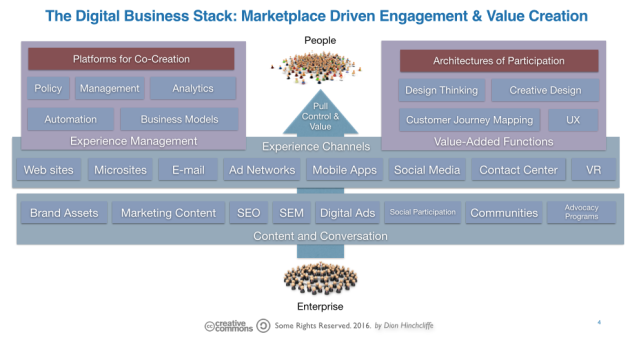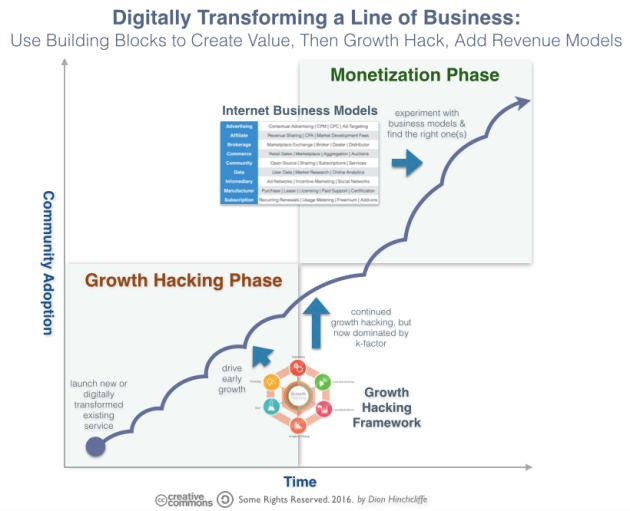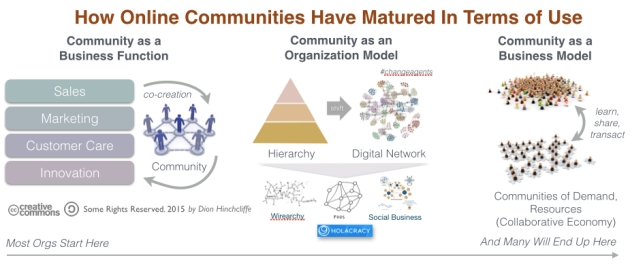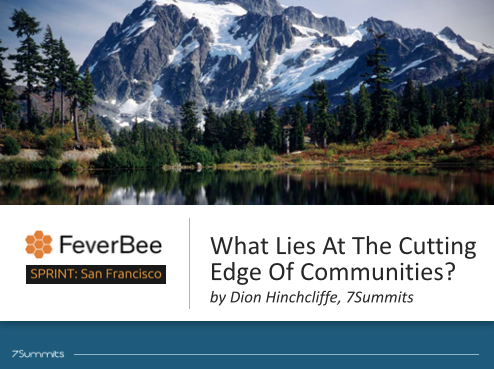Dreamforce 17: Live Blogging the Benioff Keynote #df17
November 6, 2017 Leave a comment
I’m sitting here in the vast keynote chamber within Moscone Center in San Francisco again this year for Salesforce’s annual confab. Long since an obligatory pilgrimage for those in enterprise SaaS and cloud computing, Dreamforce remains the single largest business technology event in North America, and some say the largest software event in the world of any kind.
Dreamforce has once again taken over downtown San Francisco almost completely. The crowds are larger than ever and security is even tighter than last year, which was tight. With over 170,000 people here, the police presence is palpable this week, with some armed with what looks like automatic weapons. But the crowds seem more reassured than nervous about this, and frankly it’s a minor but notable shift in what has been an annual Kumbaya-style event that proactively celebrates diversity, equality, and social good just as much as the latest new technologies and products.
The Salesforce Economy Growth Projections Increase
The latest Salesforce econoy number are in as well. IDC estimates that Salesforce will 3.3 million jobs and contribute approxtimately $859 billion in new business revenue (yes, nearly a trillion dollars) by 2022:
A New Google/Salesforce Partnership for the Cloud
Salesforce has released a slew of announcements, especially around industry partnerships. The most significant is that Salesforce will integrate Google’s G Suite with multiple products and use Google Cloud Platform for international growth. The announcement is favorable for Quip, which will tie into Gmail, Hangouts and Google Calendar. Quip’s Live Apps will become embedded with Google Drive and Google Calendar with full Hangout integration. Data is shared as well with customer account details and information which can be used from Sales Cloud directly. More details on the Salesforce/Google partnership from Larry Dignan on ZDNet. Mostly, the announcement seems designed to head off Microsoft’s growing dominance in office productivity with Office 365, though there are some interesting analytics news as well.

The keynote will begin at 3pm PT and I’ll be live blogging is right here.
2:54pm PT: Will.i.am is doing a preshow on conversational interfaces.
3:07pm PT: Still getting in Ohana spirit as the usual Hawaiian commencement of Dreamforce begins…

3:09pm PT: Opening video roles. “The next wave is building. Digital and physical worlds are blurring. We’re in the 4th Industrial Revolution (also known as Industry 4.0). Revolutions never change the world gently. That innovations may only help a lucky few. We see another way. At Salesforce we live values of trust, growth, integrity, and equality of every individual in the world. The world is going to be changed by Trailblazers.”
3:11pm PT: “Welcome to Dreamforce. Let’s blaze a trail together.” Voice over now introduces Marc Benioff who comes out onto stage.
3:12pm PT: “The biggest job I have here today is to say thank you to our customers” say Benioff. “We are deeply grateful for all that you do for us.”
3:14pm PT: Now Benioff is talking about the 4th Industrial Revolution, which is apparently the theme for this year’s keynote. “I see it happening all around me. Incredible new tech like 3D printers, CRISPR, autonomous vehicles, and generation manufacturing.”
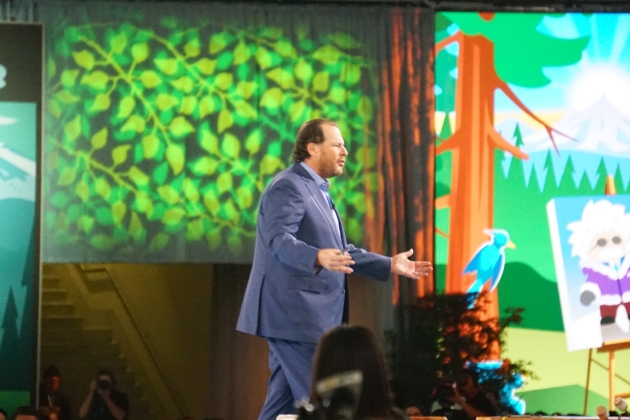
3:18pm PT: Now Benioff talking about luxury brand companies are becoming “so deeply connected to our customers. Coca-Cola is another great story. They have these incredible coolers. The next-generation of these coolers has a camera.” They can tell when the cooler needs to be replenished. “They are going through incredible transformation using this new technology. “Everywhere I go, I see this transformation. I recently stayed at Marriott. I’m a member of their loyalty program. But loyalty is dead. Now we’re on journey. Customer journeys, transformation journeys. They can even give me my key on my phone now.”
3:20pm PT: “That’s what all of us are doing, trying to connect better with our customers.” Now cites Ducati’s new connected motorcycles (see their CIO Piergiorgio Grossi’s vision for IT here at Dreamforce, a inductee to the Business Transformation 150 that Ray Wang and I selected this year.) as a new type of next-generation product. “Are these technologies united us or dividing us? Are we more connected or somehow less connected.”
3:23pm PT: “We have 2,700 sessions over the next few days” says Benioff.
3:25pm PT: Benioff continues to go over the major guests at Dreamforce including Michelle Obama, Ashton Kutcher, Kasper Rorsted, CEO of Adidas, and Ginni Rometti, CEO of IBM. Here’s the full list of major speakers at Dreamforce this year.
3:28pm PT: “Over 3,000 companies have adopted the Salesforce 1:1:1 model. And will do more than $12.5B in revenue next year. Thank you for what you have created. Business is the greatest platform for change.”

3:31pm PT: “It’s about the equality of every human being. When we see discrimination happening anywhere in the world, Trailblazers came forward and help change it. We’re committed to diversity and equality. We have to look at our boards of directors, management, and employees.”
3:32pm PT: “We are the largest net zero cloud company in the world. This is happening through all of you Trailblazers. We are the Number 1 CRM in the cloud. #1 in service and marketing. The fastest software company ever to grow to $12.5B in revenue. How did this happen? Because of you.”
3:34pm PT: “It’s amazing what you do with our platform every day. You’ve created that. And you’ve created this, the Salesforce economy. $859B in GDP impact by 2022, $1B in social impact, and 3.3 million jobs. Building communities, sales, collaboration, and industries. Trailhead is this tremendous educational environment. Einstein with artificial intelligence, Lightning, an incredible productivity environment for creating apps. Analytics in everything, and AppExchange with thousands of apps. So thank you for that. For inspiring us to build this.”
3:37pm PT: Now rolling video of Salesforce MVP Stephanie Herrara, on the power of Traiblazers. Now Benioff is up on stage with Stephanie, talking about her Salesforce Saturdays.

3:41pm PT: “Our platform gets bigger and stronger every day.” “Now I want to take a moment to talk about something new that you’re doing to see at Dreamforce this year. Our development teams have been working on creating tremendous next-generation capabilities. If you’ve been over to Moscone West to see that first floor on Trailhead. You’ve embraced Trailhead. It’s an amazing community in so many ways. 4 million badges have been issued so far.”
3:43pm PT: Benioff is now unveiling myTrailhead, “exactly for you. It’s Trailhead with your brand and your content. To make Trailhead exactly for you. This is your Trailhead. It’s the learning cloud, it’s the enablement cloud, and community cloud all in one. With myTrailbead, you can create Trailhead for your company. You don’t have to be a coder or programmer. You can create with clicks, not code.” This is one of the reasons I put Salesforce on my low code platforms ShortList recently.
3:46pm PT: You can deliver your own mobile apps without code. One last thing Trailblazers want to do, it to take all those things (coolers, motorcycles, and other physical objects) that they’re doing is to plug it into the Salesforce Customer Success Platform with (the just-announced) MyIoT. We want this as one single integrated CRM platform, that we can integrate declaratively without code. This is the more personalized and integrated Salesforce that you’ve always wanted. We want to show you in this keynote what this platforms looks like.”
3:54pm PT: Now Salesforce co-founder Parker Harris is up on stage talking about Salesforce and Heroku, claiming that they are the world’s largest platform-as-a-service (by what criteria I wonder, as AWS is certainly the largest overall.) “Employees can created ‘trailmixes‘ (which are described as ‘custom learning paths you create from your favorite trails, modules, projects, and superbadges’) and create their own education and playbooks.”
3:56pm PT: “Instead of having to hire new employees, you can send them to Trailhead instead” says Harris. Now talking about how Einstein will provide predictive forecasting. What if you could be a data scientist and create a custom field in Salesforce? What if you could build a smart custom field? We’re going to use Einstein prediction building to predict customer attrition. This can’t be generically put into the product, as it is very specific to your company. A beautiful new component. The Einstein platform is doing all the machine learning for you. Creating the scores and creating the insight. We’re going to get you dynamic layouts with dynamic Lightning Components.” A huge yell comes out of the crowd, as this is something that’s been sorely lacking up until now.
4:03pm PT: Harris continues to demonstrate mobile Salesforce experiences with T-Mobile. Wraps up all the news about the platform and hands the keynote back to Benioff.
4:04pm PT: “Salesforce technology has some incredible assets. One of them is strategic partnerships. Such as with companies like Amazon to deploy in Australia and Canada. And IBM, and Kone, with their CEO Heinrich and his talking elevators. So many companies are using the incredible capabilities of Watson. We have so many great strategic relationship. Today it’s my dream to introduce to you a new strategic partner: Google. You’re going to see an amazing new Salesforce capabilities in G Suite and running on the Google Cloud Platform. And you’re going to see customer insights like you’ve never seen them before, as we’re integrating Google Analytics in Salesforce for the first time.” Google execs come on stage to talk about it.
4:09pm PT: Continues telling the three customer stories. T-mobile story already told, now doing Adidas. Video: “We have to be able to respond to new consumer expectations immediately. If you’re not meeting their expectations at the first point, you’ve lost them right away.”
4:13pm PT: Now Stephanie Buscemi has come out asking if the 4th Industrial Revolution is bringing us together or driving us farther apart. Announcing 1-to-1 personalized journeys for customer using a tool called Journey Builder, whatever your preferred channel is: Mobile, e-mail, social, whatever. With Einstein Social built-in, Adidas is able to detect pictures of their product in social streams. “What all of you want is what Adidas needs to know in order to be successful. We made a really big bet last year. its called a DMP (Data Management Platform, a good background on DMP by Jack Marshall here.) It’s important to know and a game-changer in marketing. It captures Web online behaviors marries it with CRM data, and can then deliver personalized experiences.” Unfortunately, only ads apparently for now. My analysis: The DMP goes a good bit of the way towards mastering the critical “50 first dates problem” in engaging with and providing digital experiences to consumers today in an pervasively omnichannel world.

4:18pm PT: “Einstein bots are changing the world of service today” says Stephanie. Showing the DMP experience and how it’s unified across all customer experiences. Again, it seems about advertising right now, and not meaningfully customized consumer journeys.
4:27pm PT: Now the CEO of Adidas, Kasper Rørsted, is on stage showing off some 3D printed shoes that he’s wearing, which could theoretically print the custom size 14 show that Marc Benioff needs. “We see 1.2 million pairs of shoes a day. The more we can customized them, the more revenue we can produce, and the happier our customers will be” says Kasper.
4:30pm PT: Kasper says “we are opening an Adidas app today. We think by cannabalizing our industry we can completely change our industry.” Now Benioff is introducing the new customer story, of 21st Century Fox. Video rolling.
4:35pm PT: Now Leah McGowen-Hare is on stage talking about 21st Century Fox’s Salesforce journey, calling them a Trailblazer. They are using Quip, the “team collaboration platform”, with over 20,000 Trailblazers at the company. “Companies like 21st century fox have massive, highly engaged audiences. With Community Cloud they can share their enthusiasm and have a stronger connection with the brand.” See my analysis of Community Cloud here, which is one of the more underrated community platform in the industry. Now showing a highly customized Salesforce Sales Cloud that’s completely skinned for the company and called the Global Theatrical System (GTS) replacing Excel and e-mails.
4:40pm PT: Leah showing how AI, analytics, and Sales Cloud can accelerate sales for the new movie Deadpool 2. We get a confetti drop as well.
4:46pm PT: Marc wrapping up the keynote talking about how tech can divide or unite us. “Dreamforce and all of you are more important than ever before. The inspiration is in our own hearts, and where you’re going to take us. Welcome to Dreamforce 2017.
That’s a wrap for the Dreamforce 2017 main keynote, I’ll post my analysis of where Salesforce is going next on ZDNet shortly.
Additional Reading
Relevant for Trailhead: The digital transformation of learning: Social, informal, self-service, and enjoyable
Assessing Salesforce’s platform and ecosystem
Vital Trends in Digital Experience and Transformation | Dreamforce (34K+ views)















